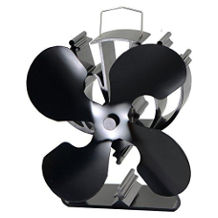Split air conditioner purchasing advice: how to choose the right product
- What you need to know
- Multisplit air conditioners consist of one outdoor unit and at least two indoor units, which you can divide between different rooms as you wish.
- Multisplit air conditioners consume far less electricity than mobile air conditioners.
- Most air-conditioning systems are capable not only of cooling the room air, but also of heating it.
- Useful extra functions include a cool-down protection, a motion sensor and a sleep mode.
Create cooling
When the sweat is written on your forehead and only cool water can provide relief, then summer is just around the corner. While enjoying an ice-cold drink in a shady spot symbolises the pleasant side of summer, the fun usually fades as soon as you are inside your own four walls. High outdoor temperatures are often accompanied by rising indoor temperatures, which many people find uncomfortable: Living comfort decreases, nights turn out to be sleepless and concentration wanes. An air-conditioning system allows you to reduce the room temperature to a bearable level, so that at least within your own four walls you can escape the sweltering summer heat.
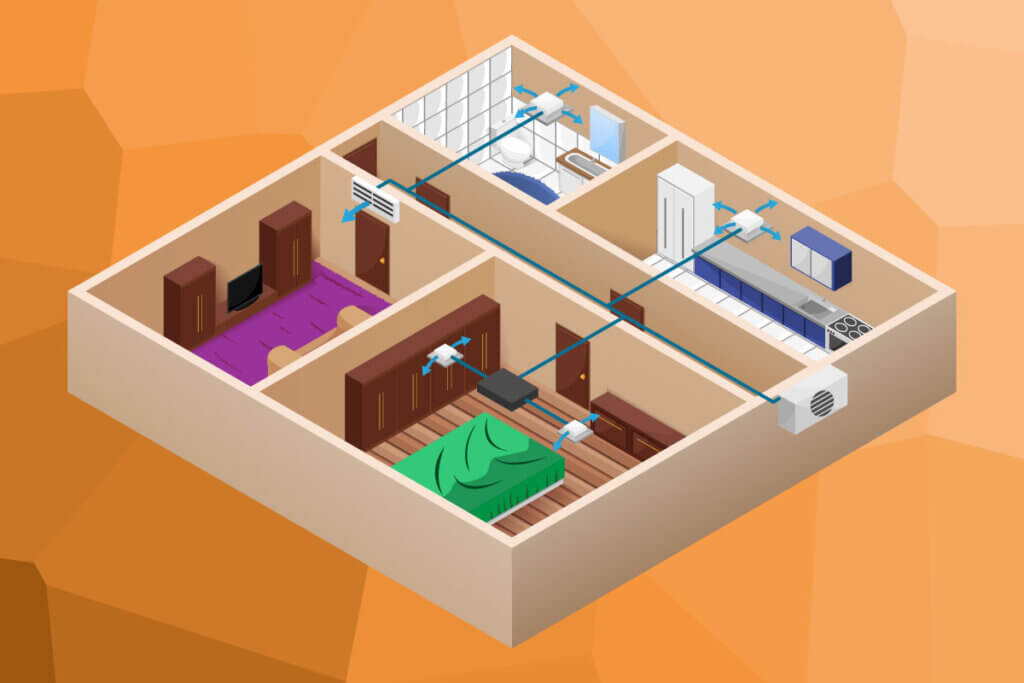
Multisplit air conditioners can be retrofitted into almost any home. They consist of an outdoor unit and several connected indoor units. Multisplit air-conditioning systems thus offer the perfect multi-room solution; especially for those who do not have the space for several, individual air-conditioning units or would like to connect more rooms to the system in the future. Since you can operate the indoor units independently of each other, you have the option of cooling or heating your flat or house as you wish. The further apart the individual units are, the more refrigerant you need to apply to air condition your home.
Multisplit air conditioners can do much more than just cool: For example, they are able to warm the premises or even regulate the humidity. This is particularly useful in winter, when rooms cool down very quickly or the air becomes dry. In addition, multisplit air conditioners filter the air; in the process, bad odours are removed and the amount of bacteria and allergens is reduced.
Advantages
- Cooling of several rooms simultaneously or independently of each other
- Additional heating function
- Air filter
- Constant room temperature
- Humidity regulation
Disadvantages
- Large amount of refrigerant required
- Dependence on a single outdoor unit
What is the difference to other air conditioners?
Multisplit air conditioners are characterised by the fact that one outdoor unit is connected to several indoor units. This means that they offer far more flexible options for indoor air conditioning than other systems.
Mobile air conditioners
This type of air conditioner, sometimes called a monobloc unit, is a small stand-alone unit that doesn’t have to be installed anywhere. Instead, you place it wherever you like. The only requirement is that you have to place the unit near a window, door or other appropriate opening in the wall. This is because air-conditioning units have an exhaust hose that must be routed outside through an opening: The warm air that the unit takes in is transported outside through the hose. This is also the biggest disadvantage of mobile air conditioners: Because of the necessary opening, warm air gets inside, which reduces the cooling line and efficiency. In addition, the noise level is very high, as is the power consumption.
Advantages
- Particularly mobile
Disadvantages
- Low cooling
- Comparatively loud
- High power consumption
Monosplit air conditioners
These systems are often referred to as single-split systems or just split systems. They consist of one outdoor unit and only one indoor unit. The mode of operation is the same as that of a multi-split air conditioner. The advantage of such a system is that you need far less refrigerant. In addition, you can accommodate several of these duo units in a flat or house and thus do not have to rely on a single outdoor unit. In this case, however, you need more space, because the various outdoor units have to be placed on an outside wall, on the roof or in another location. A multi-split air conditioner is far more space-saving. In addition, the system can be supplemented with further indoor units.
Advantages
- Efficient split system
- No dependence on a single outdoor unit in the event of a defect
Disadvantages
- Separate outdoor unit required for each indoor unit
- High space requirement for several units
- No addition of further indoor units possible
What to consider when buying a multi-split air conditioner
A multi-split air conditioner costs between 300 and 5,000 euros, depending on the design. In addition, there are possible follow-up costs for additional indoor units, which also cost several hundred euros. Last but not least, you have to reckon with the running operating costs, which depend on the current electricity price. So the purchase of the right multi-split air conditioner needs to be well considered.
Staying cool
The most important function of a multisplit system is cooling. The overall performance of the system depends on what the individual indoor units have to do. The following factors play a decisive role:
- Room size and ceiling height.
- Geographical orientation of the system as well as the windows and the associated strength of the solar radiation.
- Size, number and insulation of the windows.
- Any additional heat sources.
The cooling capacity of an air conditioning system is given in kilowatts. If the system has a heating function, its output is stated separately. In most cases, the cooling and heating functions differ by 0.5 to 1.0 kilowatt. If you want to buy several indoor units, you must bear in mind that each unit has its own cooling capacity. This should always correspond to the conditions of the room and the output of the outdoor unit. Orientate yourself on the size of the room. As a rule of thumb, you can assume about 60 kilowatts of cooling capacity per square metre of living or working space. This results in the following picture:
| Living or working space in square meters | Required cooling capacity in kilowatts |
| 25 | 1.5 |
| 33 | 2.0 |
| 42 | 2.5 |
| 50 | 3 |
| 67 | 4 |
| 83 | 5 |
| 117 | 7 |
| 150 | 9 |
| 167 | 10 |
| 208 | 12.5 |
| 250 | 15 |
A means of cooling
The coolant that is in the air conditioning system is ultimately responsible for the system cooling the air. It is a liquid specially manufactured for the requirements of air conditioning technology. Either a pure coolant is used or a mixture of different coolants.
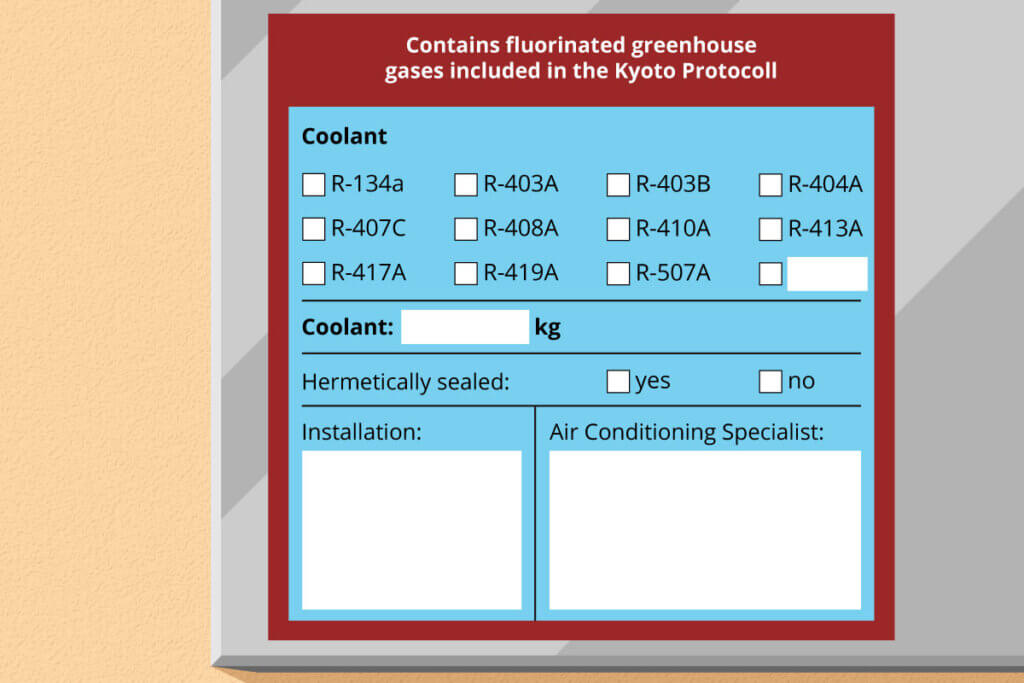
In most split air conditioners, the partially halogenated fluorocarbons, also called HFC mixtures, R-407C and R-410A are used. The refrigerant R32 is a component of R-410A. For some years, however, there have also been split air conditioners that use pure difluoromethane (R32) as a refrigerant. The refrigerant used is marked on the air conditioner so that you can see the information during maintenance work.
The cool downside
The coolants used in multi-split air conditioners have a high global warming potential, but are not ozone depleting. Newer refrigerants, such as R32, have lower global warming potential than traditional refrigerants, such as R-410A. Make sure that the coolant does not leak or otherwise come into contact with the environment. The chemical substances are highly harmful to the environment and have been classified as hazardous to water by the Federal Environment Agency.
It all depends on the technology
Modern multi-split air-conditioning systems use inverter technology and adjust the cooling or heating output to the temperature in the room. This also shortens the system’s start-up time and consequently reaches the desired temperature more quickly. The system then ensures that the desired temperature is maintained. Air conditioners with inverter technology also have lower energy consumption than classic air conditioning systems, which switch off as soon as the desired temperature is reached and start up again when the temperature drops. In addition, inverter systems are significantly quieter than conventional, usually mobile air conditioners.

How much electricity does a multisplit air conditioner consume?
When connecting your multisplit air conditioner, bear in mind that both the outdoor and indoor units require a power connection. Compared to mobile small air conditioners, multisplit air conditioners consume far less electricity. The average annual consumption of the cooling function is around 250 to 300 kilowatt hours. That is about 150 to 200 kilowatt hours less than a conventional mobile air conditioner. At an approximate average price of 30 cents per kilowatt hour, the annual cost of cooling with an air conditioner is 75 to 90 euros. In comparison, a mobile air conditioner would cost you between 120 and 150 euros. You can tell the energy efficiency of a multisplit air conditioner by its label. Modern units belong to an energy efficiency class from A to A+++.
Extras for more comfort
Multisplit air conditioners not only cool and heat, but also offer corresponding functions that optimise the operation of the system:
- Winter control: Thanks to this mode, cooling is possible even when outside temperatures are low.
- Timer: Set a time for the air conditioner to cool or heat. With a weekly timer, you can also store daily switching points.
- Motion sensor: Units with a motion sensor switch on automatically and adjust the intensity of the airflow when you enter the room.
- Sleep mode: In this mode, both the power and the volume of the unit are reduced so that it runs more quietly at night and the room does not cool down.
- Presets: Some units allow you to save your preferred temperature settings and recall them at the touch of a button.
- Protection against cooling down: The minimum temperature that can be set in heating mode is 10 degrees Celsius. This makes operation extremely economical and the unit does not cool down too much.
Operating options
Modern multi-split air conditioners can be controlled not only directly on the unit, but also remotely. Most devices have a remote control included in the scope of delivery, with which you can set the programme and the desired temperature. Many manufacturers now also offer an app for smartphones. For this, the air conditioner must be Wi-Fi enabled and connected to a home network. Some devices can be retrofitted with a WLAN adapter. Then download the manufacturer’s app and manage the system from various locations in the house.
How a multi-split air conditioner works
Multisplit air conditioners work according to the recirculation principle: The room air is extracted, cooled or heated in the unit and returned to the room.
The indoor unit
The indoor unit contains an evaporator that evaporates the liquid refrigerant and draws the required heat from the room air. The system then transfers it to the outdoor unit.
The outdoor unit
In the outdoor unit, the gaseous refrigerant is compressed by a compressor. The compression causes the refrigerant to heat up. The heat is expelled via a condenser. The gas liquefies and flows back to the indoor unit via an expansion or throttle valve, where the liquid refrigerant is converted into steam and released into the room.
… and vice versa
If necessary, you can also reverse this process to heat the room air. In this case, the refrigerant extracts heat from the outside air. It is compressed by the compressor and then released into the room.
How is a multi-split air conditioner constructed?
The general structure of a multi-split air conditioner is simple: Two refrigerant lines run between the outdoor and indoor units; one from the outside to the inside and the other from the inside to the outside. These lines are made of copper and insulated with foam. Each indoor unit you install must be connected to the outdoor unit via corresponding pipes. Due to the temperature differences of the refrigerant in the two units, condensation may occur. This is led through a small hose into an existing drain.
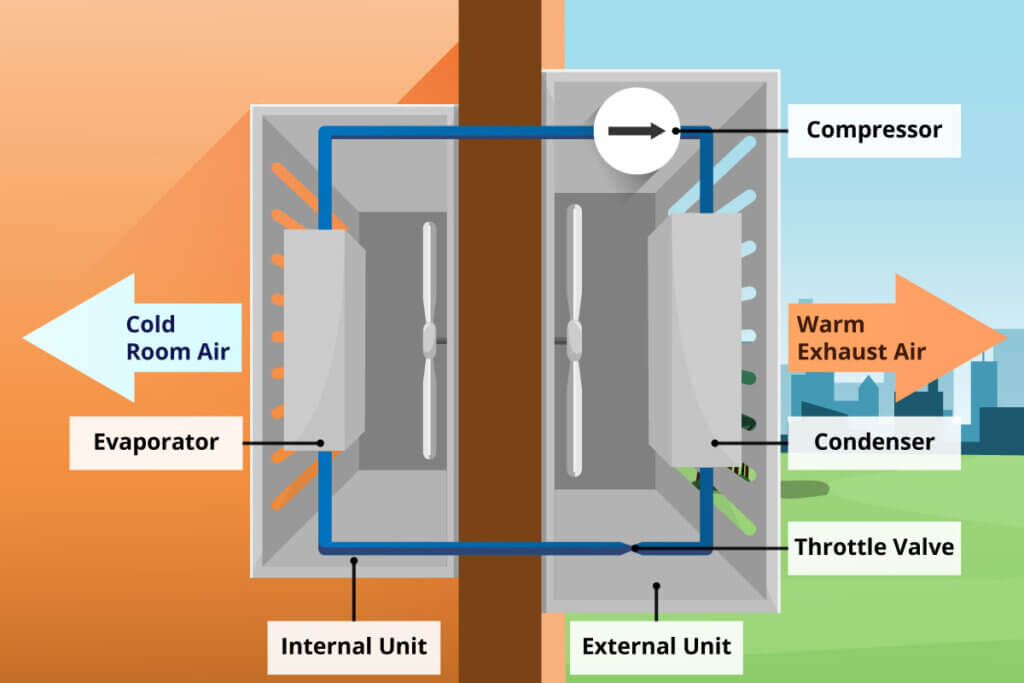
From construction to installation
The outdoor unit of a multi-split air conditioner is always installed outside. Due to its light weight, you can install it both on the house facade and on the ground in front of it. If the building permits, the roof also offers a suitable location. If you intend to install your unit on the balcony or terrace, you should be considerate of other residents and neighbours. Although multisplit air conditioners are no louder than a TV set at room volume or a normal conversation at around 60 decibels, they can still be perceived as a noise nuisance in the long run, especially if someone is right next door. In rented properties, you must discuss the installation of a multi-split air conditioner with the owner or landlord beforehand.
Where you mount the indoor units basically depends on room design aspects. However, remember that the longer the lines between the indoor and outdoor units, the more refrigerant is needed. In addition, the risk of a leak is higher with longer and heavily branched pipes. In this case, refrigerant could penetrate the building structure and cause damage.
Furthermore, the indoor units are available in different designs and can be freely combined with each other, so that you can adapt them to the conditions of the room. However, the mode of operation is the same for all models.
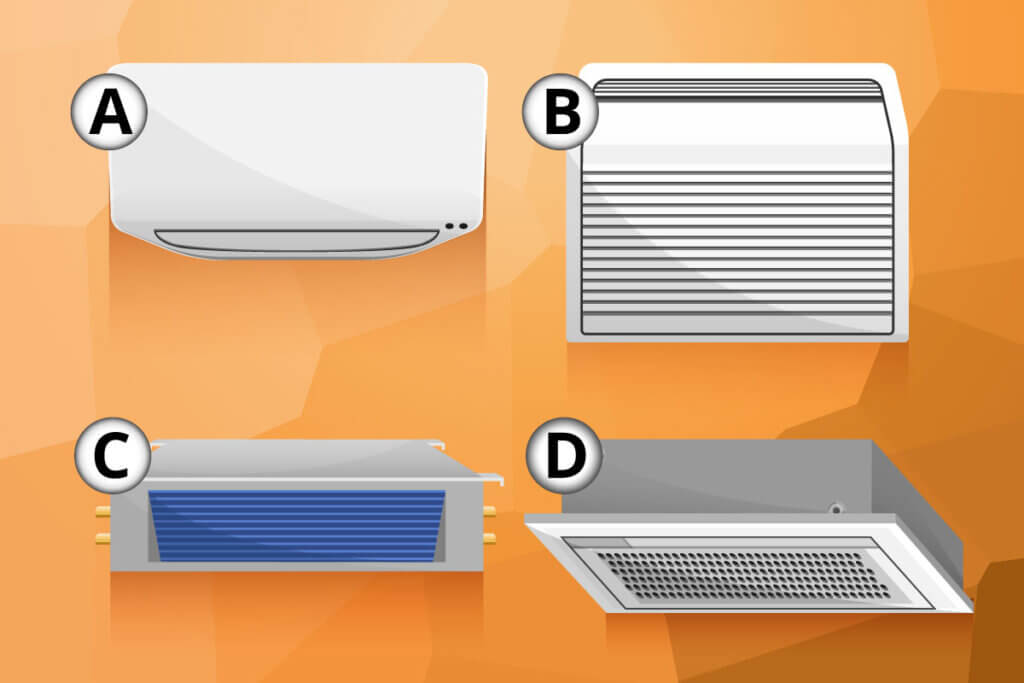
Maintenance for better performance
To ensure the smooth functioning of your air conditioning system, you should service your multi-split air conditioner at regular intervals. This also prevents germs and bacteria from collecting in the system. Dirty filters also lead to a reduced cooling or heating capacity. High energy consumption and increased costs are the consequences. To be able to clean and maintain the system optimally, it makes sense that both the indoor units and the outdoor unit are easily accessible.
Maintenance is a must
In the commercial sector, regular cleaning and maintenance of an air-conditioning system is required by law in the Refrigerant Ordinance. Permanent operation in offices or retail outlets leads to faster contamination and greater wear and tear. Especially in areas with high hygienic standards, such as medical practices and hospitals, a shorter maintenance interval is mandatory.
In the private sector, multisplit air conditioners that are located in the kitchen or in rooms where people smoke get dirty most quickly. Consequently, you should be particularly thorough here. The best time for cleaning is in spring, before the first big heat waves arrive and the air conditioner has to function properly. An all-round maintenance includes the following tasks:
- Top up or replace the refrigerant.
- Check the tightness of the system.
- Check all functions and settings.
- Clean and disinfect the units.
- Replace wearing parts if necessary.
Tip: Self-cleaning filter
Units with a self-cleaning filter are particularly practical. Here, dust and dirt are collected by a filter and placed in a separate compartment. When the compartment is full, a light on the unit will indicate this. All you have to do is remove the compartment and vacuum it out with a hoover. Of course, such a cleaning aid does not replace regular maintenance of the system. However, the filter prevents coarse contamination and prevents the cooling capacity from being reduced.
Images 1-6: © FinalCheck

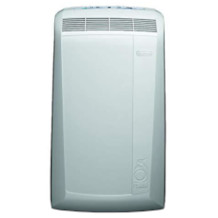
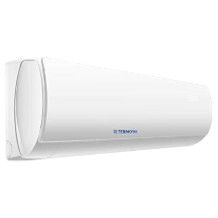
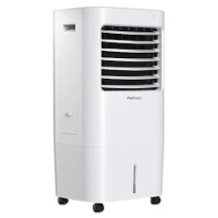
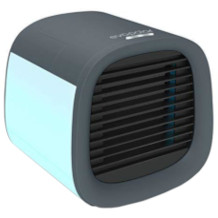
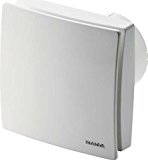
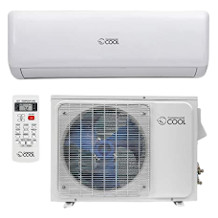
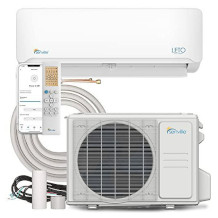
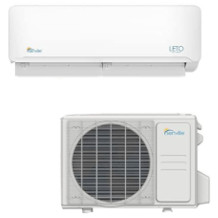
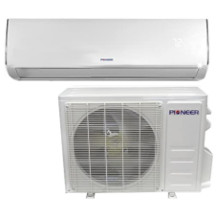
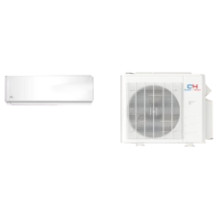

 4 reviews
4 reviews


